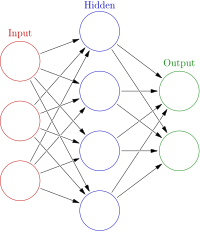
Photo from wikipedia
Synapses are essential to the transmission of nervous signals. Synaptic plasticity allows changes in synaptic strength that make a brain capable of learning from experience. During development of neuromorphic electronics,… Click to show full abstract
Synapses are essential to the transmission of nervous signals. Synaptic plasticity allows changes in synaptic strength that make a brain capable of learning from experience. During development of neuromorphic electronics, great efforts have been made to design and fabricate electronic devices that emulate synapses. Three-terminal artificial synapses have the merits of concurrently transmitting signals and learning. Inorganic and organic electronic synapses have mimicked plasticity and learning. Optoelectronic synapses and photonic synapses have the prospective benefits of low electrical energy loss, high bandwidth, and mechanical robustness. These artificial synapses provide new opportunities for the development of neuromorphic systems that can use parallel processing to manipulate datasets in real time. Synaptic devices have also been used to build artificial sensory systems. Here, recent progress in the development and application of three-terminal artificial synapses and artificial sensory systems is reviewed.
Journal Title: Small
Year Published: 2019
Link to full text (if available)
Share on Social Media: Sign Up to like & get
recommendations!